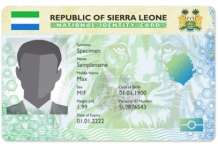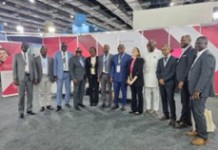By Amin Kef Sesay
Achieving peace and national cohesion in Sierra Leone depends primarily on the sincerity of purpose of the Government of the day to create a wide open space for all the tenets of democratic accountability to flourish as the first major step towards engendering trust and confidence in the people that the Government is truly serving their best interests; not that of those holding the power and their associates.
Socially, there has to be durable peace building networks at national, regional district, chiefdom and community levels that constantly inform the people in their own languages of the need to see each other as one people working towards the common good.
State institutions should be able to connect instruments and interventions designed to deliver peace, security, justice, development, human rights and humanitarian assistance to the most vulnerable members of society in all four corners of the country indiscriminately and without partiality.
The meaningful inclusion of marginalized sections of the population is a very critical element of peacebuilding.
This involves inclusion of specific demographic, economic, political and geographic groups into the national decision making framework. It also includes inclusion of actors from different sectors – i.e. Government, Civil Society, non-state actors, the private sector, local, national, regional and international stakeholders.
From conflicts in Africa and the developing world, it is clearly seen that growing income disparity and increasing polarization provide ample space for grievances and violence within the State.
In which context, we cannot underplay the all-important role of the country’s political parties in preaching peace and tolerance to their supporters.
As a big segment of the population, the importance of women’s inclusion in peace and development processes from a rights perspective and with regard to the effectiveness of recent women-led conflict prevention, conflict resolution and transitional justice initiatives cannot be missing from the building peace and cohesion building blocks.
In this light, the achievement of peace and national cohesion depends heavily on the mobilization of traditional and religious leaders as message carriers, as well as mobilization of civil society, especially youth and women’s groups as community animators on discussions of peace and cohesion issues.
Non-state actors (NSAs) are potent peace and cohesion stakeholders that have been excluded from peace-building processes.
NSAs driven by a sense of alienation could be given political space to engage, but often are not.
Some non-state actors, such as tribal chiefs, deliver services to their constituencies where State services are absent or inaccessible and should be included in security sector reform (SSR) and good governance initiatives.
Furthermore, corruption and abuses of power undermine the effectiveness of State security and justice sector institutions and their legitimacy in the eyes of the public, while the arbitrary actions of State security actors can be drivers of violent extremism.
Likewise, transparency in defence and security arrangements with stakeholders can reduce perceptions of corruption and abuse.
The knock-on effects of trust building are seen in the provision of community safety, which has been shown to contribute to public trust in Police. Community policing programmes are examples of where trust built between local communities and security forces increased the legitimacy of a country’s reform initiatives.
Artists, musicians, film makers and cultural agents in combination with traditional peace-building techniques can go a very long way in sensitizing the public on the need for peace and cohesion and its benefits to the nation.
Finally, despite recognition among peace-builders that young people and their perspectives should be incorporated into peace and development processes, few concrete examples of how to do so effectively are not seen in the governance structures at both national and local council levels.
Looking ahead, the structure and work of the coming Peace Commission should provide specific insights into what works for integrating youth and youth perspectives into peacebuilding.
Inclusion matters in building durable peace and cohesion. People should not only vote and be abandoned until the next elections. At all levels, their voices must be heard by the handlers of State power in designing and implementation of policies, programs and projects.
Meaningful inclusion geared towards reinforcing the pillars of unity and cohesion must therefore overcome structural inequalities, so that all stakeholders are afforded sufficient authority to influence decision making or otherwise effect change.






